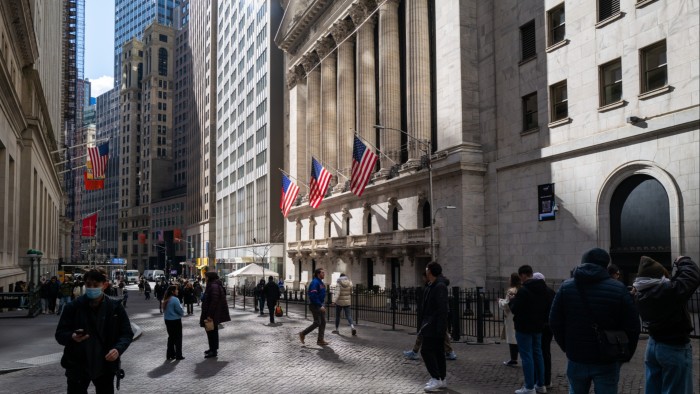Unlock Digent Editor FREE
Roula Khalaf, editor of FT, chooses her favorite stories this weekly newsletter.
The writer is the author of the author A random walk on Wall Street
The results are V: This time it is no different. Indexing remains an optimal investment strategy.
S&P Global Ratings every year publishes messages comparing all actively managed investment funds with different shares. These reports are considered to be a gold standard for evaluating the performance of active funds with their alternatives of index funds.
Bottom line from the end of 2024 message This month is that there was no surprise. In 2024, the American passive index funds exceeded about two -thirds of actively managed funds. This is in line with past results, which also show that one third of managers who overcome in one year in one year are generally not the same as those who win the comparison in the next comparison.
As you bring the results in 20 years, approximately 90 percent of the active funds bring lower yields to low -cost index funds and indexed exchange traded funds. Equivalent long -term results were recorded for funds focused on developed economies, developing markets and bonds. Even for small capital funds, which had a good 2024, in the last two decades exceeded only 11 percent.
It is not impossible to beat the market, but if you try it, it is more likely to achieve 90 % of active managers. Evidence is stronger every year: Index funds are optimal strategy for an ordinary investor.
Despite evidence, many active managers claim that the future will be different. One common perspective is that the popularity of passive investment has created an unhealthy concentration of shares in popular indices and has made indexing increasingly risky strategies. The second argument promoted by some active managers is that index investors pour money into the market regardless of society earnings and growth opportunities. This threatens the market ability to reflect basic information, creates incorrect prices, allowing active managers to use their skills to overcome in the future.
It is certainly right that the market is highly concentrated. Several technological stocks (known as spectacular 7) had one third in the S&P index and was responsible for more than half of the total yield of 25 % of the market in 2024. However, such a concentration is not unusual.
At the beginning of the 18th century, bank shares were about three quarters of the total value of the stock market. The railway shares represented a large part of the total market value at the beginning of the 20th century and at the end of the 20th century, the Internet -related shares dominated. And it is not unusual for a small percentage of shares to be responsible for most of the profits on the market. AND studies Hendrick Bessembinder found that only 4 % of the US traded stocks have been virtually all the redundant revenues of the US stock market over the cash register accounts since 1926. The concentrated market is not a reason to abandon index funds. Ownership of all markets on the market will ensure that you own several shares responsible for most profits on the market.
The second argument “this time is different” against indexing is that index funds have grown so quickly that they disrupted the price of the market price of stocks almost correctly and precisely reflect new information. Some have suggested that the growth of passive indexing has created bubbles on the stock market, such as the current boom in AI -related shares. More investments, regardless of basic information, make it easier for active managers to beat the index in the future.
There are logical and empirical reasons to reject these claims. Even if 99 % of investors were bought by index funds, the remaining 1 % would be more than sufficient to ensure that new information was reflected in stock prices.
And if it believes that bubbles will allow active managers to overcome, consider data for an Internet boom that has expanded to 2000. Many internet shares sold in three -digit multiples of earnings, much higher than the current AI's favorite AI. Spiva data shows that in 2001, 2002 and 2003, 65, 68 and 75 % of active managers in each of these “post-bubble” years, the market underestimated.
The evidence grows more convincing over time. The core of each investment portfolio should be indexed and diversified across asset classes. Indexing will certainly result in low fees and low transaction costs and are tax effective. Index funds are also boring, and this can be one of their greatest advantages, less vulnerable to the waves of optimism or pessimism that characterize financial reports. Like a white rabbit in a movie Alice in Wonderland He advises us, “Don't just do anything, not to stand there.”



